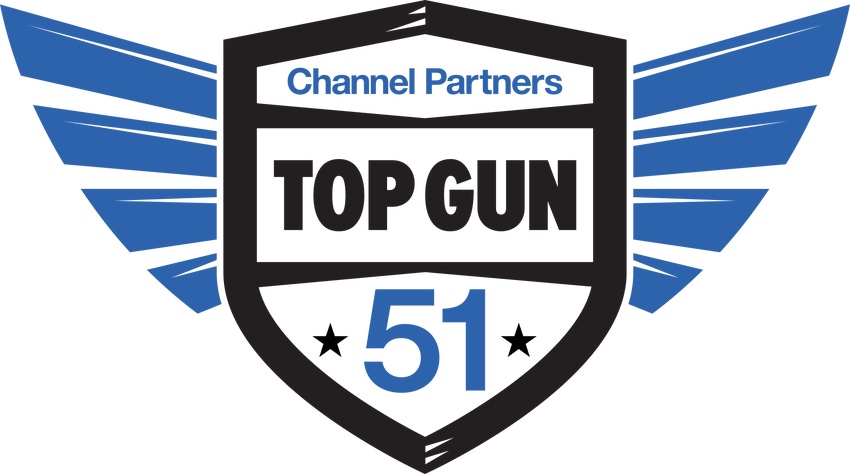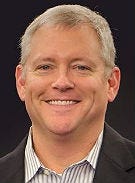Red Hat's Musson brings years of experience in the IT channel to the open source market leader.
September 26, 2019

As open source software continues to be devoured by business IT departments for a wide range of IT initiatives, the channel has been expanding its role to include more open source products and services.
Scott Musson, vice president of global strategic alliances at Red Hat, a Linux and open source software market leader, knows all about that trend.

Red Hat’s Scott Musson
Musson, who joined Red Hat in June of 2013 from VMware, has had a long background in IT channel relationships going back to his days with Compaq, HP, Dell and Tandem Computers. At Red Hat, Musson is responsible for Red Hat’s global alliance, system integrator and independent software vendor (ISV) relationships, while also managing the company’s strategic relationships with HP, IBM, Dell and Cisco.
As a Channel Partners Top Gun 51 Award winner, he recently spoke with Channel Futures about his work with the channel partner community and how Red Hat is continuing to drive and grow its business with its partners. Here is an edited version of that conversation:
Channel Futures: When and how did you start working with the channel?
Scott Musson: The channel stuff really started in 1999 when I went to Compaq after it acquired Tandem Computers in 1997. At Tandem, I was on the marketing side around the data warehousing business intelligence group. There I started working with ISV partners. When Compaq acquired Tandem, I shifted over to Compaq and went to work in the partner organization and became a student and a fan of the channel model.
We recently unveiled our “Top Gun 51,” a list of today’s channel executives who deserve recognition for building and executing programs in a way that drives partner, customer and supplier success. |
CF: Did Compaq’s acquisition of Tandem Computing change your channel experiences?
SM: When I started looking at Compaq as a company, it was interesting to me to understand a company that basically started channel first and that was driving all its business using the channel leverage model, which maximizes the efficiency of different channels. It was super-efficient. I started talking to a bunch of the senior executives at Compaq about why this model worked — people like Bob Gregerson and other early channel pioneer folks in the technology industry. And it was just one of those things where I thought it just made so much sense that I wanted to be a part of that type of organization, and frankly, I’ve never left.
CF: What makes the IT channel such an interesting place for you to have spent so much of your career?
SM: It was really the synergy behind being able to use fewer resources in a leveraged model, kind of like a connect-one-to-many-pipes model where partners could invest in our business, our technology, our assets, our training and then go out and talk to customers without having to be physically present in front of a customer. It was the efficiency of the leverage model. It was the ability for us to drive a win-win scenario. So, partners were making money, we were making money, everybody was benefitting. It was really the efficiency and leverage that made it work.
CF: What has been your biggest accomplishment in terms of Red Hat and the channel since you joined the company in 2013?
SM: I would say broadening the definition of the channel. What I mean is historically we in the technology industry referred to the channel as those partners that resold our products and technologies. We’ve had a two-tier distribution model with distributors and resellers. We would put products into the system and people would go sell them. The work our team has been doing has been to …
… really broaden the definition of the channel to include companies that not just resold our technology but delivered services, built solutions on top of them and who really broaden the value of the technology. Some of those resell our technologies to really become part of our broader partner ecosystem.
CF: That certainly wasn’t the way it was with open source at the beginning. How do you and Red Hat now approach your work with the channel? What’s your approach to making Red Hat’s position with the channel better on a regular basis?
SM: I think it’s evolved over the years. I certainly spend a lot of time with channel partners, both resellers and influencers. Companies like the OEM’s and the large global system integrators that have become increasingly relevant to our overall partner community. The real area that my team and I manage are partners and partnerships, investing our energy and spending time on driving relationships between partners within our ecosystem. For example, helping a system integrator who’s built an insurance application take that out more broadly through our channel ecosystem, which is really starting to increase its value. Everybody talks about the increasing complexity of the IT world. The reality is no single company provides everything a customer needs anymore, right? So, by building these bridges between partners, whether it’s an ISV, system integrator, solution provider, cloud provider or whatever, we can all put these together into a broader ecosystem and then take that entire solution out to a customer. It’s kind of one on one, you know, building incentive programs for partners, which is kind of like the older model.
CF: What makes a successful channel executive?
SM: I would say the willingness to give up control in return for increased channel leverage. I’ve worked with a lot of direct sales executives who struggle with not knowing exactly the nuances of every deal, of every opportunity in the system. Not only how is the pipeline growing, but also really understanding that if I turn on a broad channel model in the right ways, I might not know every detail about every opportunity. Yet in the end, I’m going to have more opportunities and more people representing my technology. So, a successful channel executive is someone who’s willing to spend time and effort with companies that are going to represent that brand in the marketplace, and not necessarily spend each day in and day out with a customer.
CF: What is the channel’s greatest strength today for Red Hat?
SM: I think it’s evolved to really developing solutions on our technology or utilizing our technology. Five or six years ago, I would have said customer reach was our greatest strength. Now it’s more about building solutions that add value for a customer while utilizing the technology that Red Hat brings to the marketplace.
CF: And what’s the biggest challenge?
SM: For Red Hat and the channel in general, we both still measure ourselves broadly on …
… bookings and revenue. And at some point, we must determine how we can transition to measuring ourselves on solution development and having a broader reach, while understanding that the bookings and revenue will follow from that.
CF: How does the acquisition of Red Hat by IBM earlier this year affect Red Hat’s channel partners and its relationships? Are you seeing any effects from this?
SM: You know, most of the channel partners or partners that we’ve spoken to are excited about the acquisition. It opens us up a broader customer base. IBM has a large footprint in the marketplace. Our partners do see that as an opportunity. We’re not seeing channel conflict today. We’re going to do a really good job managing the channel from IBM and from Red Hat, and work to understand where each adds value. So far, I would say all signs are quite positive.
CF: What are your thoughts today about open source as a model for business computing?
SM: Certainly, the acquisition of Red Hat by IBM kind of speaks to the perceived value of the open source model in the industry. I’ve spent time at VMware and other proprietary software companies. I believe the open source model is the future. We’re bringing more and more technologies to market utilizing that model. I tell people who I meet about open source when they ask me what I do. I outline the benefits and the value proposition that we bring. People tell me that’s amazing. To me, the direction and trend of open source is that the technology is beyond compelling. It’s been an interesting transition and I’m kind of excited to see where it goes.
Read more about:
AgentsAbout the Author(s)
You May Also Like


